Showcase 2025 Student Spotlight: Georgia O' Neill
Student Spotlight featuring BA (Hons) Product Design student Georgia O' Neill and her project 'Curl Easy'.
By Jon Duckworth | Published on 15 May 2025
Categories: Student Showcase; School of Architecture, Design and the Built Environment;
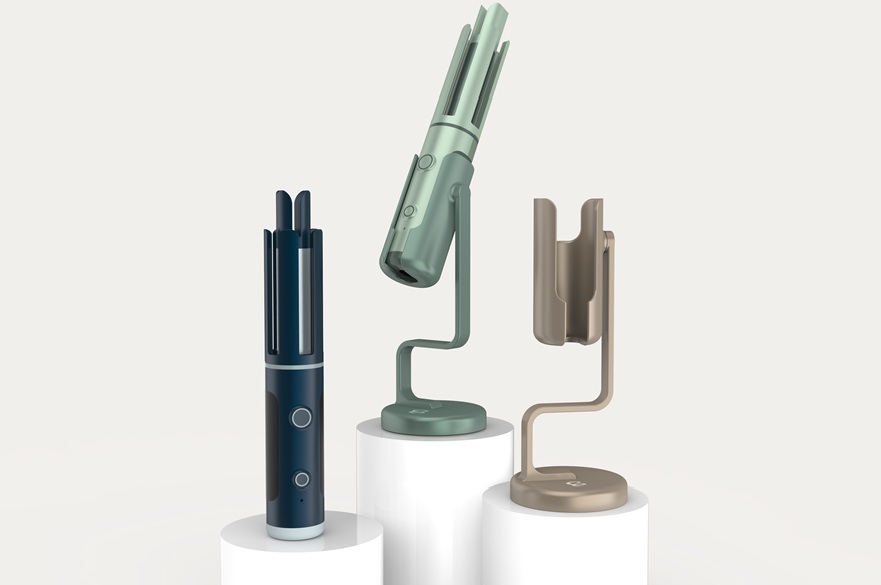
The Project
Curl Easy is a hair styling tool designed to make curling hair easier, safer, and more accessible, especially for individuals with limited mobility or dexterity. Traditional hair curlers often require a strong grip, twisting motions, and the use of both hands. Curl Easy removes these barriers by introducing automation and a supporting stand for ease of use.
At the heart of the product is a fully automated curling system that gently wraps the hair around the heated barrel with minimal effort. Specially shaped prongs and a built-in guide help position each section of hair correctly, while raised, silicone-ringed buttons give clear tactile feedback, making the device easy to control with just one hand.
To support independent use, the curler includes a light that shows when it’s ready to use, and an audio alert that signals when to release the curl, reducing the need for constant visual checks. A soft foam handle adds comfort, and the curler can be placed in an adjustable stand that holds it at the right angle, helping users operate it without needing to lift or hold it throughout styling. The stand fits into a weighted base for added stability.
Curl Easy aims to empower users by making everyday self-care more accessible, helping more people enjoy the confidence and independence that comes with styling their own hair.
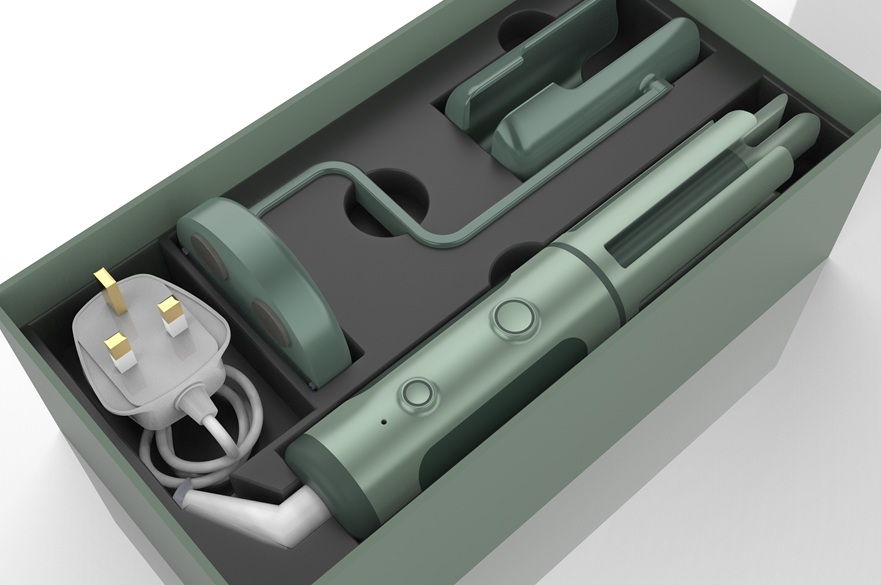
Curl Easy is designed to make hair-styling more accessible and inclusive for people with disabilities.
The inspiration behind the project
Curl Easy came about through Georgia's research and was inspired by the experiences of people living with disabilities. She says: "I have always found curling my hair to be a personal and empowering part of my self-care routine. There’s a lot of independence and confidence that comes from being able to take care of yourself and feel good in your own skin. Hearing the stories of individuals with disabilities, I realised that not everyone has equal access to that experience, especially when tools aren’t designed with accessibility in mind. That really stuck with me. I wanted to create a hair curler that helps make self-styling more inclusive, so more people can enjoy that same sense of independence and self-expression that I do."
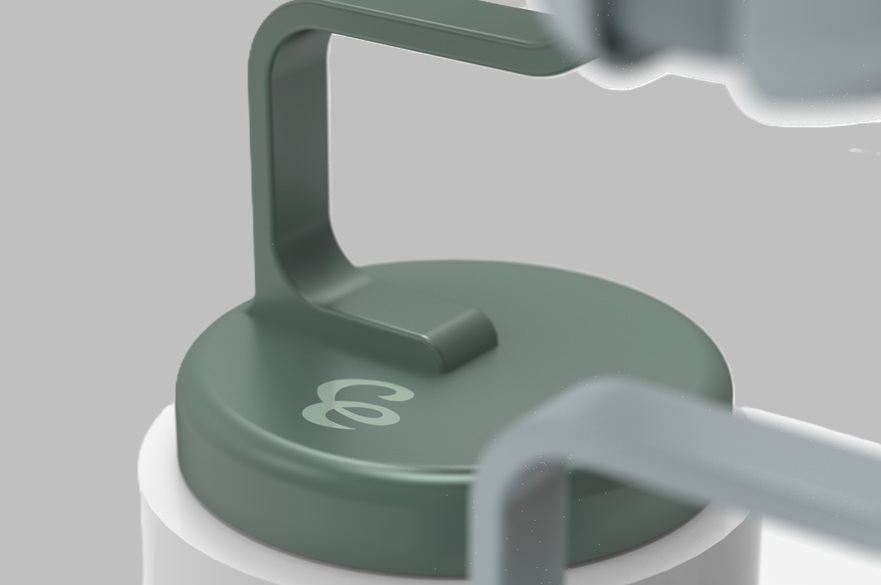
Curl Easy's automation reduces the need for dexterity and grip.
The project experience
Georgia says: "Working on this project has been incredibly meaningful to me. As someone who enjoys curling my own hair, I know how much independence and confidence can come from everyday self-care. Designing a hair curler for individuals with disabilities allowed me to combine that personal passion with a real-world problem, creating a solution that could genuinely improve people's lives.
"This project pushed me to think more critically about accessibility and inclusive design, while also bringing together all the skills I’ve developed throughout my time at NTU, from research and user testing, to CAD and prototyping. It's been rewarding to see how thoughtful design can make a difference, and I'm proud to have created something that empowers users to feel more independent and confident in their routines."
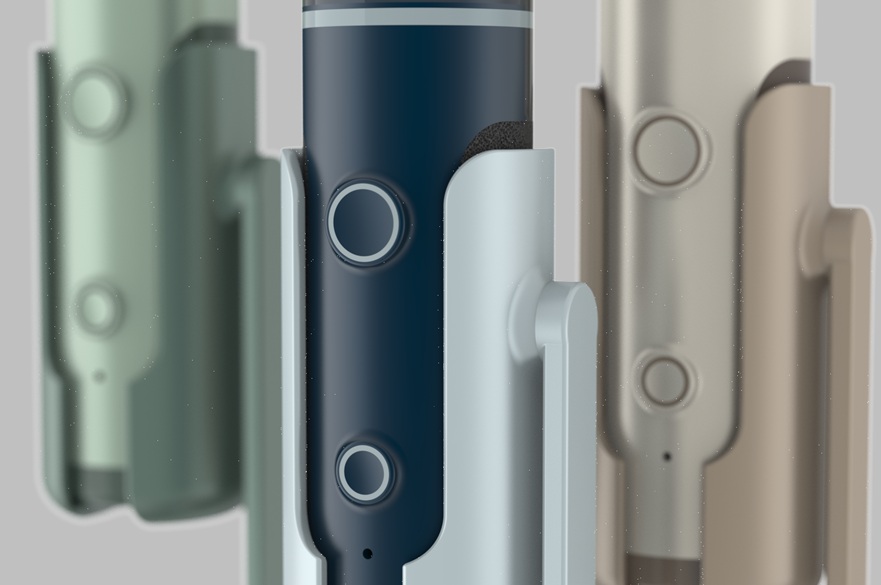
Silicone-ringed buttons give clear tactile feedback. The device has a weighted stand.
Being part of NTU
For Georgia, studying Product Design is about discovering your strengths as much as it is about growing in confidence. She has the following advice for future Product Design students:
"Don’t be afraid! Every project is a chance to grow. With each one, your confidence builds, and so does the quality of your work. One of the most valuable things you can do is take time to understand your own strengths. If sketching isn't your strongest skill, focus on showcasing your ideas through CAD, prototyping, or research - there are so many ways to communicate good design. Try not to compare yourself to others - everyone has a unique process and creative style, and that’s something to embrace!"
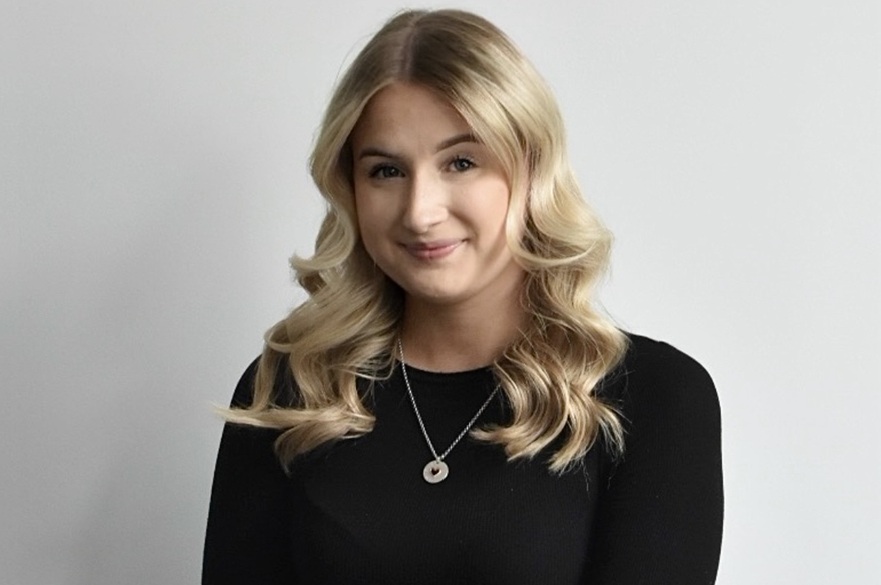
Georgia O' Neill - BA (Hons) Product Design
Closing remarks
One final piece of advice?
"Do a placement year. My own skills and quality of work improved massively after gaining real-world industry experience. It gave me perspective, professional discipline, and a much clearer idea of what I wanted to achieve in my final year."